Frozen has fantastic music, gorgeous visuals, and great comedic timing. Its character designs are colorful and charming, and the acting is superb. Little wonder it’s still sitting at the top of the highest-grossing animated films to date.1
But I’ve got to admit, despite how much I enjoyed watching Frozen, I found myself disappointed. Because no matter how often I laughed, found myself humming the songs, or worried for the future of a snowman who wanted to see summer… the film wasn’t what its advertisements said it would be.
Not What It Said It Was
The trailers advertised Frozen as a journey to thaw out the kingdom of Arendelle.2 But rather than being a journey to discover how to control and reverse Elsa’s magic, the entire plot of the film boils down to a fearful Elsa running away, her sister Anna trying to talk to her, Elsa pushing her away, and a treacherous prince nearly killing them both. There is no overarching adventure, journey, or questing to thaw out Arendelle; the focus is on trying (and failing to) talk to Elsa.
An Absent Character
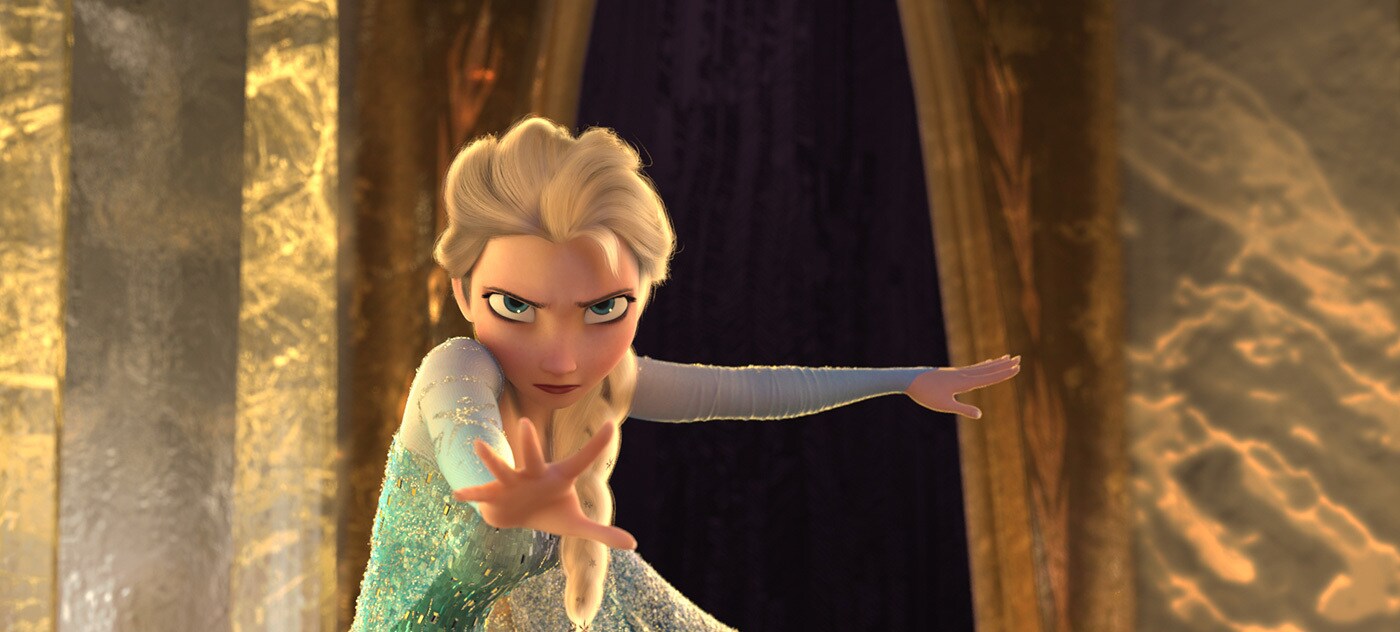 |
| Walt Disney Studios 2013 |
Despite the film’s focus on her, ironically, Elsa hardly features in the official trailers,3 even the one designed to focus specifically on her.4
The sad thing is, this makes sense: despite now being the poster-child for Frozen, Elsa barely contributes to the actual film. She freezes Arendelle on accident and runs away. When Anna arrives to convince her to reverse the freeze, Elsa proclaims she can’t. She proceeds to accidentally harm Anna before driving her away. Is it Elsa who then whisks Anna off to save her? No, the ice-salesman Kristoff does. Does Elsa find a cure for Anna? Nope, the trolls (and Anna) do. At least Elsa gets to break herself out of a dungeon. But when Prince Hans attempts to kill the sisters, is it Elsa who saves the day? No, Anna does.
So when Elsa mourns her sister and abruptly discovers she can control her magic through the power of love,5 it felt unearned to me. Writing her this way is an incredible disservice to the character and all the fans who love her.
A Broken Bond
And how ironic that a film whose trailer boasts “The power of family is the strongest magic of all”6 is barely about its two family members! In fact, Anna and Elsa hardly interact at all. With the story centered around the estranged sisters, I was excited to see how their journey to save Arendelle would give them a chance to rekindle their childhood friendship and forge a new, strong bond… but this plot of reconciliation also gets very little attention.
There was no adventure to stop the winter; there was no quest to force the sisters to bond. It was all crowded out by unnecessary subplots like Hans and the Duke of Weselton’s political maneuvering or Anna seeking love at first sight. What happened to the movie I was promised about saving Arendelle from winter? What happened to the film I was excited to see because it was going to be about two sisters?
Sure, there’s tons of questing tales; that’s not real original. But I was baffled that the film threw away the potential of its most heartwarming and unique aspect: its sister characters.
Good stories about siblings are few and far-between, and fewer still the ones about siblings who actually get along. The fact this film was about two sisters was probably what got me most excited. So when Anna and Elsa barely get a chance to interact the entire film… it left me wondering what could have been. What was the key to making Frozen the film its ads said it was?
For that, I went back to Frozen’s fairytale roots.
Inspiration
 |
| Gerda and Kai by Vilhelm Pedersen; from Wikipedia.com |
Frozen is inspired by Hans Christian Andersen’s “The Snow Queen,” which follows a little girl, Gerda, as she undergoes many hardships to lift a curse on her friend Kai,7 who has become cold-hearted, cruel, and jaded. The mysterious Snow Queen finds Kai and places additional spells upon him to make him forget about his loved ones, including Gerda, before whisking Kai away to her icy palace.
Though the villagers are certain Kai is dead, Gerda is determined to find and rescue him. And, after encountering a sorceress who tends a garden of eternal summer, a den of dangerous robbers, snowflake guards, clever creatures, and kind-hearted people, Gerda finally arrives at the Snow Queen’s palace. Gerda melts Kai’s frozen heart through the power of her pure love, breaking the spell.8
Frozen contains very few elements from the original tale, and fewer still are used as they were in the original fairytale. For instance, while both stories feature a character who could be considered a “Snow Queen,” Elsa has little in common with the fairytale’s ruler of the snow-bees. Both stories contain trolls, but while Hans Christen Andersen’s troll was a demonic creature who created a cursed magic mirror, Frozen’s trolls serve as heroes with knowledge of ice spells who operate as surrogate family figures. Both tales are meant to be about love and self-sacrifice, but in the original fairytale, the love is a bond of friendship that is hard-fought-for and hard-won, whereas the sisters’ love feels little-earned by the time you reach the end of the film.
But what if Frozen were more like what it was advertised as… and more like its original source material: a quest? Elsa’s powers accidentally freeze over Arendelle, and she and Anna must go on an adventure to find a cure. This would allow the film to focus on both its primary and secondary conflicts: thawing Arendelle and restoring the broken relationship between sisters. Throughout the journey, the sisters would be forced to spend time together and get to know each other.
Heck, you can even keep almost all the catchy tunes!
But, to focus properly, we would need to set aside a number of side-plots—and some beloved characters…
The Bad News
Let’s face it: some of Frozen’s dudes already felt extraneous. Why was the duke even there if there was already a villain and a threat from the everlasting winter? And Kristoff, as much as I adore that ice-harvesting teddybear, barely gets to do anything except travel with Anna and shuttle her to the trolls to figure out what’s wrong with her.
If we want to focus on the sisters and their struggle to thaw Arendelle, we simply wouldn’t need our dudes: Hans and the duke can go because the central conflict isn’t about Elsa vs. the world; it’s about Elsa vs. herself. And Kristoff would get in the way of Anna and Elsa being forced to bond. No need for singing snowmen, either, as much as it pains me to say goodbye to Olaf.
The trolls would also say goodbye: no need for troll doctors to diagnose Anna.
This gives us a pared-down version of the story that can best focus on its main element—the two sisters—in a way that pays homage to the original fairytale (and still gets to keep most of those beloved songs).
So, without further ado, here’s a fresh take on Frozen.
Fixing Frozen
Every night before the king and queen tuck their young daughters into bed, they tell Elsa and Anna about the Snow Queen. She is the ruler of the snow-bees: bees that look like snowflakes that can control the ice and snow.
While playing in the snow one day, snow-bees encircle Elsa, granting her magical abilities. She and Anna have many happy days playing in the snow thanks to Elsa’s powers.
But when their parents die, Elsa begins to isolate herself, closing the palace off to outsiders and largely locking herself in her room. Her powers slowly begin to worsen as she struggles to keep them contained.
Anna attempts to get her to come out of her room, but Elsa refuses, accidentally harming Anna in the process with her ice powers. As in the original film, this gives Anna her streak of white hair, but Anna seems otherwise unaffected. Anna forgives Elsa, though she is a bit gun-shy around Elsa’s powers because of it. Elsa misinterprets this, thinking Anna is afraid of her, and this causes Elsa to withdraw further in an attempt to protect Anna from her abilities. As the two grow older (and further and further apart), Anna sings “Do You Wanna Build a Snowman” as in the original film.
What the two don’t realize is that in closing herself off emotionally, Elsa is causing her powers to fall further out of control, creating a freeze that slowly begins collecting in the depths of the palace. As Elsa waits in self-imposed isolation, she sings the first two verses of “Let It Go.”
The day arrives when Elsa comes of age and is to become queen of Arendelle. As in the original film, they’re about to open up the palace to the public, and Anna is excited, hoping to finally end her lonely days by finding a husband: she and Elsa sing “For the First Time in Forever” here.
But as the princesses greet people and just as Elsa is about to be crowned queen, the ice—which has been collecting for years—bursts from the palace. This causes Elsa great distress, and she begins to accidentally create more ice and snow. People now know Elsa’s curse, and she becomes more and more distraught, trying to flee.
Knowing there’s no turning back, Elsa sings the chorus of “Let It Go,” thinking this release means she’s finally free of the guilt, shame, and hiding that have plagued her all her life. But unlike in the film, the song rings with irony: Elsa is letting her powers go, but she’s only pretending that her powers no longer bother her. She surrounds herself with snow and ice, accidentally blinding herself to the extent of the damage it’s doing to the kingdom. She alleges that she doesn’t care what people are going to say, that the cold never bothered her; but the truth is, she still feels uncomfortable using her powers—she still feels like an outsider. She’d just rather be the one to control “slamming the door” before someone else “turns away” from her.
Then the song comes to an abrupt halt; the snow and ice settle, and Elsa sees the entire kingdom is now frozen over. Her horror begins anew, and now the people begin crying she’s a witch. But Anna comes to her defense, proclaiming it was an accident.
Accident or not, however, the people still demand a solution, so the girls vow to find a way to end the eternal winter.
Elsa is distraught, telling Anna she has no idea how to control her dangerous powers, that this is why she isolated herself to begin with. But Anna reminds her of their parents’ story about the Snow Queen and the snow-bees. Perhaps the Snow Queen would be able to help them find a solution, a way for Elsa to control her powers.
Together, the two make their way down the half-frozen river in search of the Snow Queen.
The rest of the story would include various encounters that mirror Gerda’s trials. This would both give Elsa chances to use her powers for good—to protect Anna and herself—and also draw the girls closer together as they learn more about each other.
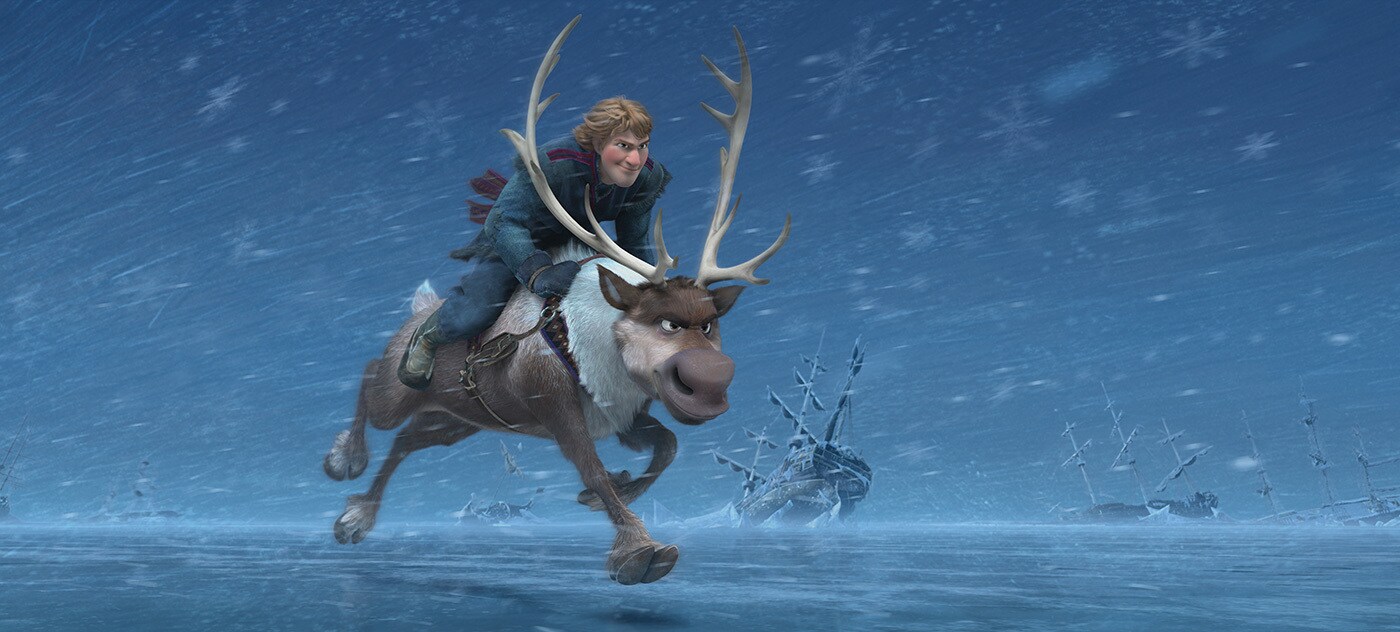 |
| Walt Disney Studios 2013 |
The first major trial would include being captured by robbers as Gerda was in “The Snow Queen,”9 allowing the sisters to work together to escape—along with the help of a reindeer named Olaf the robbers have stolen. When the girls leave the thieves’ den and mention the Snow Queen, Olaf the reindeer seems to know which way to go, so they begin to follow him.
As the three travel together, for an additional bonding moment, you could even repurpose Kristoff’s “Reindeer(s) Are Better Than People” song for the two sisters to sing while traveling with Olaf. The second trial occurs when Olaf the reindeer leads them past one of the only places that seems to be unaffected by the ice and snow: a beautiful garden of eternal summer. Olaf hesitates and tries to keep them from going in, but the sisters see a beautiful enchantress inside. Thinking this may be the Snow Queen, the sisters rush in.
It is, of course, a trap: the sorceress is not the Snow Queen, and she tells the girls how lonely she’s been. Hearing the girls’ tale of woe, she separates them, knowing if they remain together, it will only remind them of their quest to stop the winter, which will encourage them to leave her. She casts a spell upon them to make them forget each other. But the girls simultaneously stumble upon the edges of the garden, where they can see the eternal winter raging outside. It triggers something in them, something they struggle to remember… and then they see Olaf the reindeer, all covered in snow—and he looks like the snowmen they used to make together as children. The sorceress’s curse is broken; the sisters remember one another and seek each other out. Once they’ve reunited, they flee the garden, and Elsa is again forced to use her powers to help them escape as the sorceress angrily pursues them. The sorceress can’t chase them into the cold winter, however; so the girls just barely manage to escape.
Thrilled by their success, the sisters begin to sing, with Elsa largely completing “Let It Go” here.
They finally arrive at the base of the Snow Queen’s palace. It’s treacherous to traverse due to the raging winter, which has gotten worse because of Elsa’s long absence in the garden. Together the girls carefully climb to the top of the icy mountain.
At the summit, they find themselves at a frozen lake. There, the Snow Queen sits on her throne.
But when the girls petition the Snow Queen for a cure to the eternal winter, the Snow Queen replies that she can do nothing to help; she was not even the one to grant Elsa the powers; the snow-bees gave them to her because they deemed she had a loving, selfless heart worthy of the power. Here the Snow Queen paraphrases the original fairytale: “I can give you no greater power than you have already; don’t you see how strong that is? How well you have gotten through the world? You cannot receive any power from me greater than you already have. If you cannot yourself break the curse of eternal winter, I can do nothing to help you…”10
Anna begins to despair, but Elsa embraces her and kisses her on the head, swearing that they will find a way to break the curse… together. Anna agrees.
These words are the key, as they prove the girls’ strength of heart, their love for each other and for the world. The eternal winter begins to melt in Elsa’s nearby vicinity, and the Snow Queen proclaims that they have discovered at last the key to their power: the power of love. For love locked away only withers, chills, and kills: but a heart that is open brings joy.
Elsa and Anna, overjoyed, together venture back the way they’d come, riding on Olaf the reindeer. Everywhere Elsa goes, winter falls away and turns to spring until all of Arendelle is melted.
(And heck, tweak a few of the words, make it about familial love, and you can even use “Love Is an Open Door” here.)
Elsa returns to the palace, where she takes the throne as the rightful queen, with her sister at her side. Every winter thereafter, Elsa throws a celebration where she creates ice and snow for all the people of the land to enjoy.
What do you think? What changes, if any, would you make to Frozen? I can’t wait to read your fresh take on Frozen in the comments below!
—
Notes and References:
- “List of highest-grossing animated films [sic],” Wikipedia, June 6, 2019, accessed June 6, 2019.
- Walt Disney Animation Studios, “Disney’s Frozen Official Trailer,” YouTube video, 2:32, September 26, 2013.
- Ibid.
- Movieclips Trailers, “Frozen Official Elsa Trailer (2013) – Disney Animated Movie HD,” YouTube video, 2:30, October 17, 2013.
- “Frozen (2013 Film),” Wikipedia, June 4, 2019, accessed June 5, 2019.
- “Frozen Official Elsa Trailer,” YouTube video, October 17, 2013.
- TheGamerFromMars, “The History of Frozen – GFM,” YouTube video, 11:27, May 21, 2014.
- “The Snow Queen,” Wikipedia, April 30, 2019, accessed June 5, 2019.
- Ibid.
- Andersen, Hans Christian, “The Snow Queen,” The Complete Fairy Tales and Stories, trans. Erik Christian Haugaard (United States: Anchor Books, 1983). Accessed December 3, 2013.
Unless otherwise specified, all photos are taken from Disney’s official online Frozen Gallery and are the property of Walt Disney Studios 2013. Used under US “Fair Use” laws.
Frozen and all related terms are the property of Walt Disney Studios. And I am not affiliated with them.

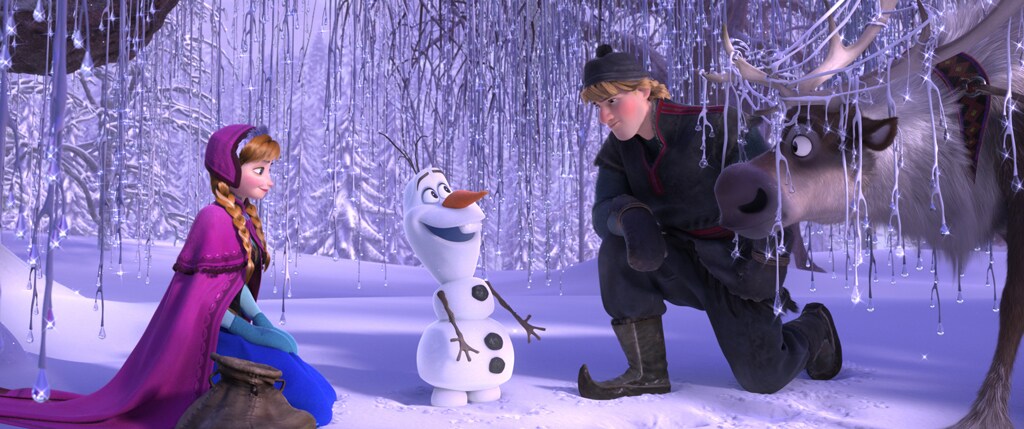
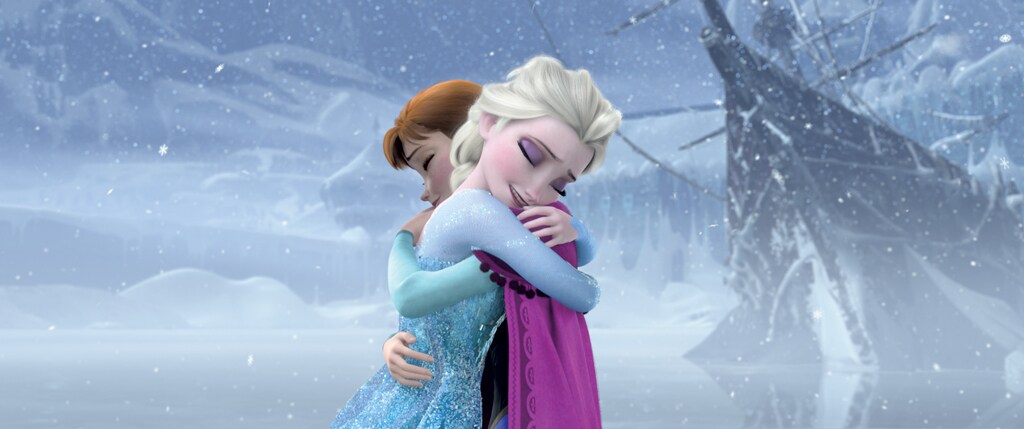
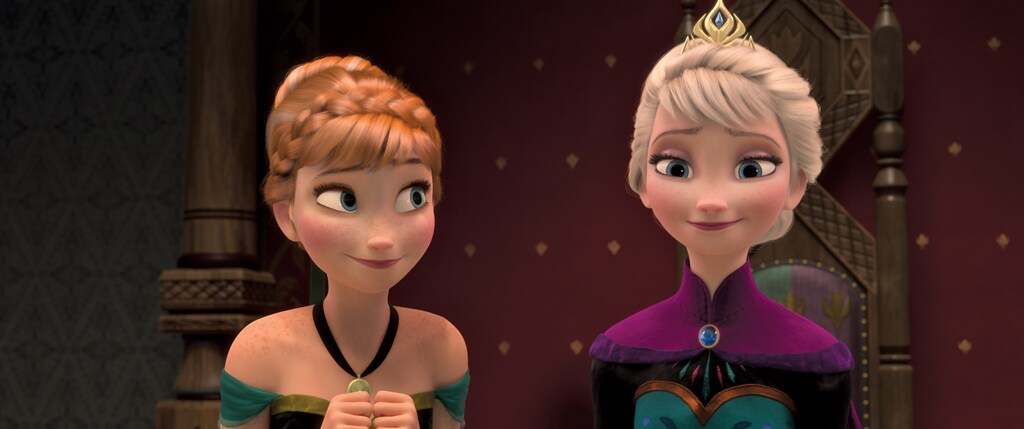
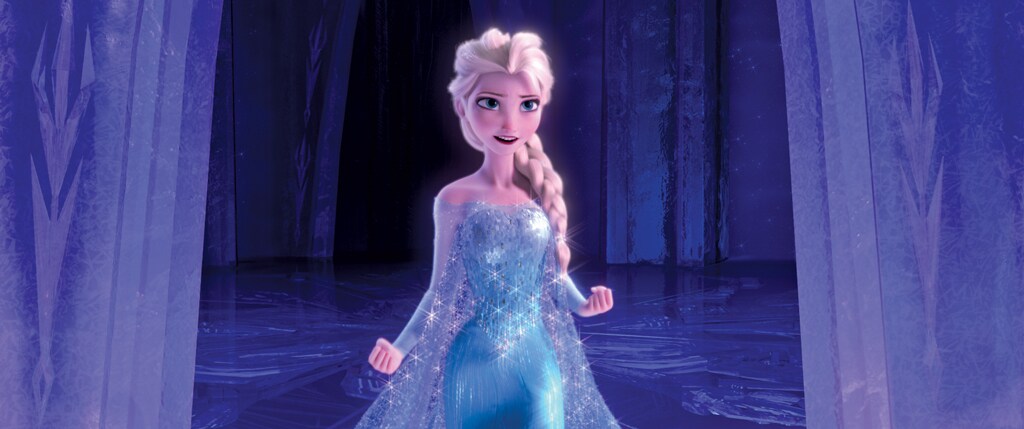
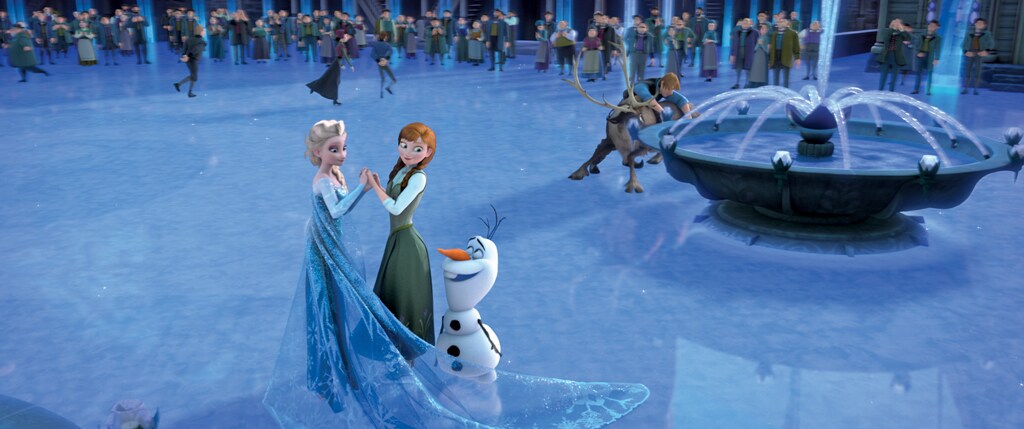
Leave a Reply to Jeannette Jonic Cancel reply